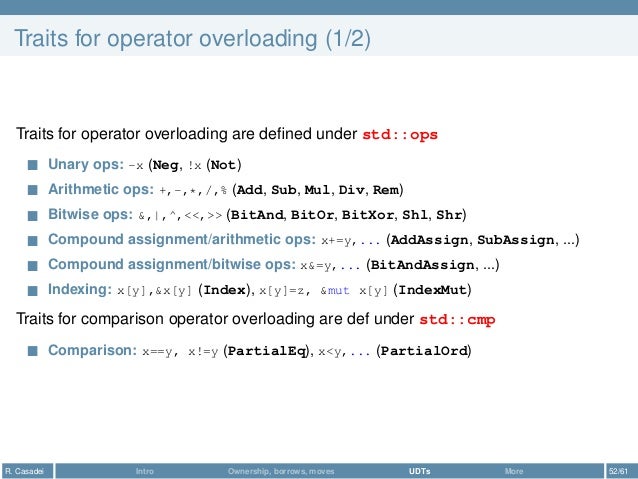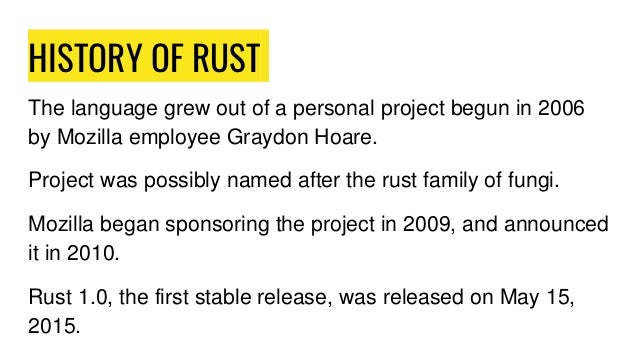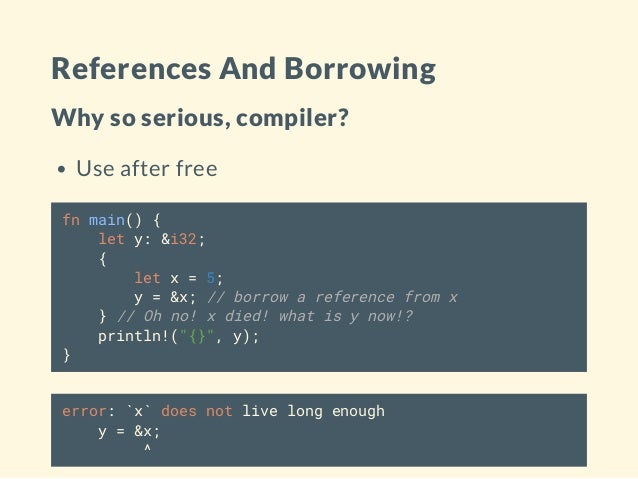
Rust will simply print an error to the console:įor the above example to work, you’d have to explicitly make the variable mutable:
#Rust programming language uses code
Note how the code also prints a concatenated value via the operators. Here, we’re declaring a new variable (through the let operator, just like in JavaScript), with zero and a line after, incrementing its value by one. We also talked about the immutability of Rust’s variables, so let’s take the following example: Depending on the familiarity you have with other major languages, it’s like Rust has taken a bit (the good bits, by the way) from each one and composed a new language syntax.Īs you’ve seen before, the execution starts at the main function. The syntax resembles a mix between JavaScript, Ruby, and Kotlin. You should see a result like the one below:įigure 1: “Hello World” in Rust Playground What About Rust Syntax? To print something to the default system’s output, use the println! function. You need a main function, like many other languages Įach function is preceded by the identifier fn It’s nice to have that when getting started, since it demonstrates the basic structure of a Rust program: Once you enter the Playground page, you see a Hello World example already there:
#Rust programming language uses install
Otherwise, just follow the instructions on the Install page.

If you just want to test it out without installing it, Rust offers an online playground for that. It, instead, makes use of a convention called Resource acquisition is initialization (RAII) on which the references to the objects, disk space, etc., are kept stored in a specific part of the memory and auto managed by Rust whenever the memory needs to be emptied.

Regarding garbage collection, none of the common systems used by Java or C# is adopted by Rust. When it comes to data values, you can only initialize them via a bunch of predefined ways (all of which require a default value to work). Rust also worries a lot about memory safety by not allowing, for example, null pointers.

Yes, you read that right! If you want that variable to be, well, variable… you’d have to explicitly say that to Rust. This focus on safety can be seen everywhere within Rust, from the syntax to the basic data structure definitionsįor example, whenever you declare a variable in Rust, it is going to create it as a constant. It plays very well with systems that require intense safety and concurrency by defining strong security barriers, ensuring the system’s protection at its core. Rust is really fast, to the point of almost reaching C++ performance numbers.

In this article, we’ll take some time to analyze the language at its very introductory topics. It was created by Graydon Hoare for Mozilla and later refined until it reached a stable version for release. In practice, its usage resembles a lot of C++, being very light, simple, and fast. In short, Rust is a static multi-paradigm programming language, more focused on performance and security. Part of that success is the language’s flexibility: Rust can be used to create game engines, operating systems, file systems, browser components, websites and tools, and more. Since its launch in 2010, Rust has forged a path directly to the heart of the developer’s community, reaching the enviable top position among the most loved languages, according to the Stack Overflow Developer Surveys.


 0 kommentar(er)
0 kommentar(er)
